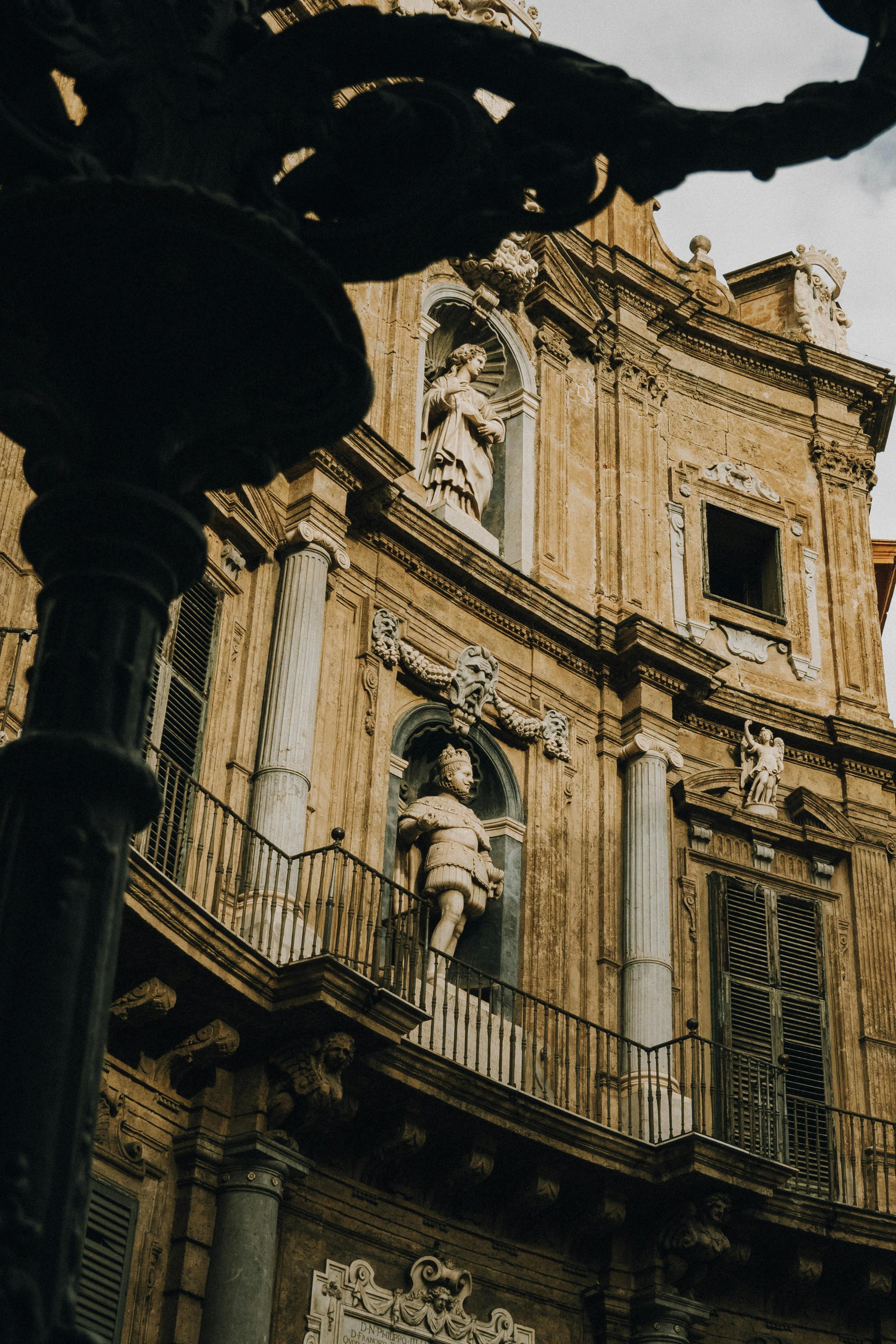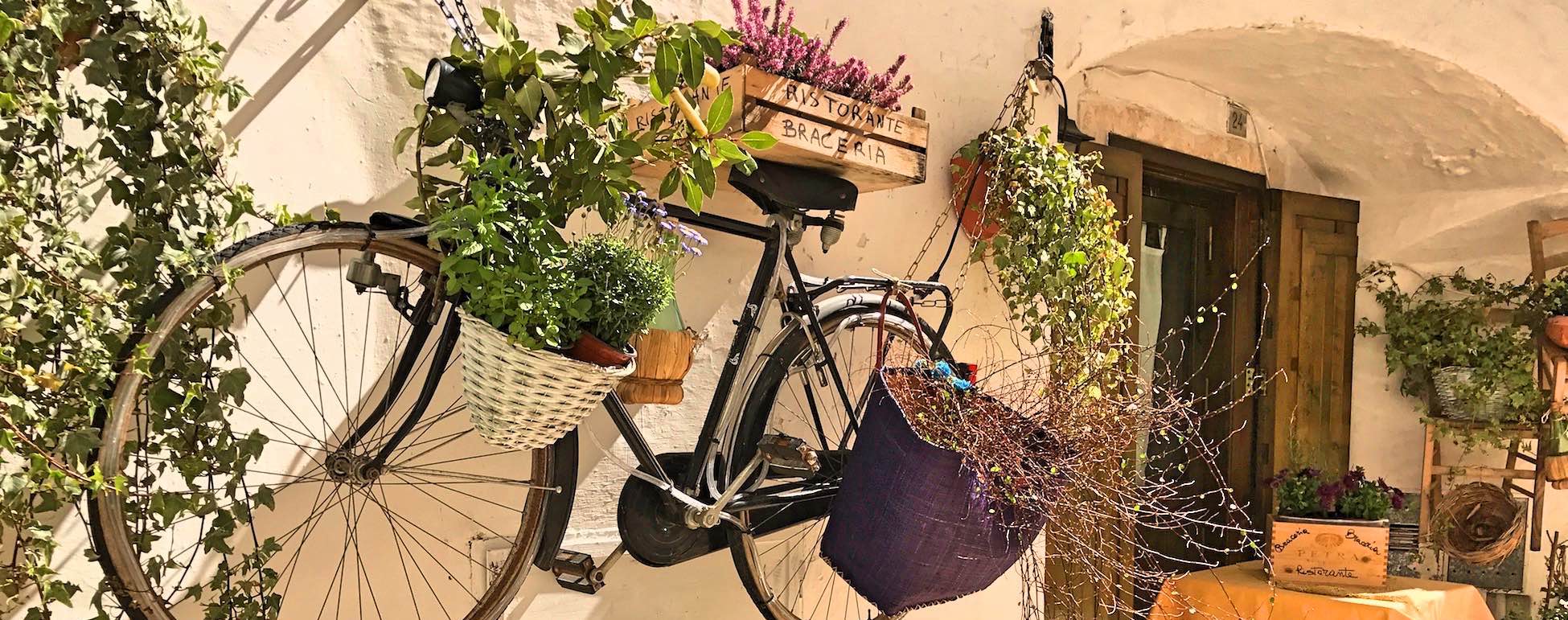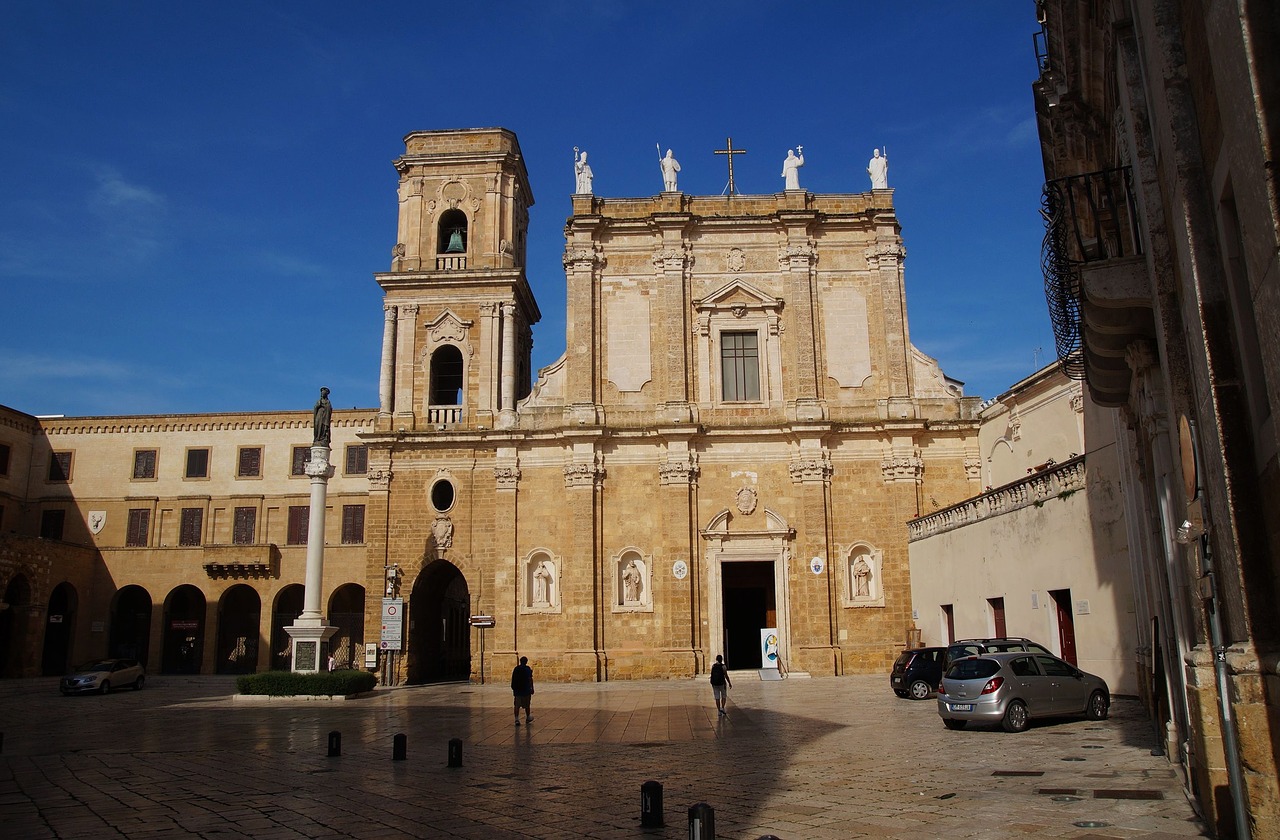Palermo is one of the most important cities in the Mediterranean, a melting pot of different languages and ethnic groups that have come here over the centuries.
Each of which has left an unmistakable trace of its passage. This is visible above all in the historic centre, one of the largest and most varied in Europe, from which the Palermo Cathedral stands out, an exemplary combination of styles that coexist here as testimony to the multiple nature of the city.
You could decide to spend a weekend in Palermo or discover it in passing with one of our tours:
⇒ Western Sicily Walking Holiday
What to see in Palermo
We have prepared a list of things not to be missed in Palermo to fully enjoy the beauty of this fascinating southern metropolis, but with a strong international flavour. Why not decide to dedicate a day discovering its beauties?
- Palermo Cathedral;
- Quattro Canti Square;
- Pretoria Square;
- Bellini Square.
And now let's set off together to discover the most evocative places in Palermo!
Palermo Cathedral
Visiting the historic Cathedral of Palermo is like leafing through an art history manual of the peoples who dominated the Mediterranean. Despite the coexistence of several elements, the Norman taste prevails, to which subsequent modifications were added.
Despite this, the harmony of the structure contrasts with the architectural grandeur with which it appears to the eyes of visitors who remain fascinated by the richly decorated façade, today as then.
Vilegna Square or Quattro Canti Square
Piazza Vigliena is the nerve centre of Palermo, a main hub from which to visit the city. In fact, the square, more commonly known as Quattro Canti, is a wedding favour set in the historic centre of Palermo. Symbol of the Spanish Viceroys, it is an octagonal square where the main city arteries meet: Via Maqueda and Via Vittorio Emanuele.
At the corners of the square there are 4 seventeenth-century buildings, whose diametrically opposed facades are finely decorated on three levels with closely related statues and depictions. The theatricality of the place makes it one of the most photographed squares in Palermo.
Pretoria Square
A little further on we find Piazza Pretoria, the Square of Shame for the people of Palermo, due to the presence of the naked statues placed in front of the Monastery of Santa Caterina. The square dates back to the sixteenth century but despite this it would seem that the shame does not only refer to the modesty of the time. In fact, it is said that the Senate of Palermo paid an unprecedented sum for the purchase of the fountain, despite the fact that the population was experiencing a period of severe crisis due to the incessant advance of epidemics and famines. The splendid fountain, made entirely of Carrara and Billiemi marble, is adorned with 8 decorative statues and various legendary characters such as Sirens, Nereids and Tritons, Roman deities and figures belonging to mythology. The entire structure, enclosed by a monumental wrought iron gate added in the second half of the nineteenth century, is made up of an alternation of floors and stairways which contribute to creating a very scenic architectural complex of undoubted beauty.
Bellini Square
Skirting Palazzo Pretorio on the right you quickly reach Piazza Bellini overlooked by the Church of San Cataldo, a mix of oriental and western styles, easily recognizable by the red dome at the top, and the Church of Santa Maria dell'Ammiraglio, a delightful jewel which houses a rich heritage of Byzantine mosaics. For the people of Palermo it is known as " La Martorana " because tradition entrusts the birth of the delicious "martorana fruit" to the Benedictine nuns of the nearby convent.
What to do in Palermo - the Slow Active Tours proposal
Once you have discovered the wonders and symbolic places of Palermo, the time has come to get to the heart of this ancient city overlooking the sea.
For this reason we have prepared a list of things to do in Palermo that you absolutely cannot miss!
Teatro Massimo
The Teatro Massimo undoubtedly represents one of the symbols of Sicilian culture. The imposing external structure, in full neoclassical style, is made up of an enormous dome and the monumental staircase from which you enter is greeted by a triumphal triumph of mirrors, marble and inlaid wood.
The exterior of the Theater features a Corinthian pronaos, on either side of which are two bronze lions depicting the allegories of Tragedy and Lyrics. The entire structure is dominated by an imposing hemispherical dome which rests on a lattice, which, thanks to rollers, allows the metal structure to move due to temperature variations.
Politeama Theatre
Its monumental structure recalls that of a Greek temple and its characteristic circular shape brings back memories of the evocative Pantheon in Rome. But the classical references do not end here because the visitors' eyes are captivated by a monumental bronze quadriga with the God Apollo surmounting the arch of its entrance.
Originally the structure was outdoors, similar to a classic Roman arena, the metal roof was in fact built a few years after the inauguration.
Sanctuary of Santa Rosalia
For the people of Palermo, the 'nchianata della Santuzza, a sort of pilgrimage to the Sanctuary of Santa Rosalia on Monte Pellegrino, is one of the things to do at least once in your life. This demonstrates the unconditional love that the people of Palermo have for the city's patron saint, Santa Rosalia. The construction of the small church near the caves where the remains of the Saint were found represents one of the clearest examples of devotion and spirituality.
Monreale Cathedral
Built in 1172 according to the will of William II of Altavilla, it is located just 10 km from Palermo, but represents a fundamental stop for those wishing to visit the city following an Arab-Norman itinerary. In fact, the Cathedral, later elevated to a minor basilica, is famous throughout the world for the beautiful Byzantine mosaics which are kept inside such as the representation of Christ Pantocrator depicted on the internal apse.
Palace of the Normans
The Norman Palace is the oldest royal residence in Europe and is currently the seat of the Sicilian Regional Assembly. Inside there is a jewel of rare beauty: the Palatine Chapel, commissioned by the first Norman king of the kingdom of Sicily, Roger II of Altavilla, who used it as a private chapel. Nothing remains of its extraordinary original appearance because with subsequent modifications it was decided to incorporate the different structures into a single church. In fact, the Byzantine tradition provided that the apse faced east and therefore represented a structure in itself. Although today it appears as a single block, inside it is possible to recognize two distinct churches: a Byzantine church facing east, with a square plan, on which rests a classic hemispherical dome and a Latin church facing west, with three naves separated by ten columns. Not only that, but the presence of inscriptions in both Latin and Greek suggests that in Norman times the two religious components coexisted. A multifaceted structure whose creation was created by artists of different origins, as evidenced by the floor decorated with mosaics of precious stones of evident Arab taste. The mosaics themselves represent the most surprising element of the Palatine Chapel. They are made up of two sheets of glass that surround a very precious gold foil to highlight the figure of the Creator and his Word. The Creator who we find here depicted in the apse holds the book of the Bible open with his left hand and blesses the observer with his right.
Particularly important is the ceiling of the Palatine Chapel, created using a self-supporting structure with wooden planks from Nebrodi fir trees. Depicted here are 750 paintings with depictions of the pleasures of paradise derived from Islamic iconography. A monumental monolithic candelabra is the most surprising element of the Chapel. It is a block of white marble, divided into five orders, which rests on four representations of lions, symbols of the Normans. In the centre is the depiction of Christ while at his feet we find the figure of a man wearing ecclesiastical clothes. According to many, it was Roger II who commissioned the work. It is still used today on Easter day when the priest traditionally reads the Gospel with the light of the candle placed above it.
The Kals
Visiting the Kalsa means leafing through the album of memories of Palermo, a litmus test that allows you to read and interpret the city by travelling through the origins and history of the culture of Palermo. In fact, this very ancient Arab neighbourhood was the political and economic centre of the city for several centuries. Everything is kept among the symbolic places of the neighbourhood such as Palazzo Mirto and Palazzo Abatellis.
In fact, Palazzo Mirto was the home of the oldest Norman family in the South, obviously we are talking about the Filangeri Conti di San Marco. Which is why the sumptuously furnished interior is not surprising. In fact, the furnishings cover a vast period from the seventeenth to the nineteenth century and vary in taste and geographical origin such as the spectacular Murano glass chandeliers or the skillfully decorated gold panels from China. The interiors are also completed by numerous musical instruments of great value such as a fine Viennese piano from the second half of the nineteenth century.
Palazzo Abatellis, a valuable example of Gothic-Catalan architecture, is today home to the Regional Gallery of Sicily, whose rooms contain valuable works of art from donations, acquisitions and other palaces in Palermo. Among these, the most valuable work is certainly the Annunciation by Antonello da Messina, a valuable oil painting created in 1475. In it we admire the depiction of the Virgin caught in the moment in which the interlocutor is placed in front of her figure wrapped in a drapery that frames her young face. Art historians have pointed out how the pose, slightly to the side, derives from the Flemish models with whom the artist came into contact in Italy. The work, with its sweet naturalness deriving from the delicate gestures of the figure, is considered one of the greatest examples of Italian Renaissance painting.
Popular festivals and celebrations of Palermo
If you are in Palermo in the month of July you absolutely cannot miss u fistinu. This is the Festino in honour of Santa Rosalia, patron saint of Palermo, which is celebrated from 10 to 15 July and throughout the month of September. Since the past it has represented one of the most important religious festivals on the island, so much that it has been officially recognized as an intangible heritage of Italy. Very suggestive is the triumphal chariot, built year by year, which on the evening of July 14 hosts the statue of Santuzza, as the Saint is affectionately called by the people of Palermo. 2024 will be a very special year because the 400th party will be celebrated, and the wait for this event is already long in the city. In fact, since 1624, the population remembers the liberation of the city from the plague, which occurred through the intercession of Santa Rosalia.
In September, however, it is customary to do the acchianata on Monte Pellegrino, a 4 km route that the faithful follow on foot during the night between 3 and 4 September.






